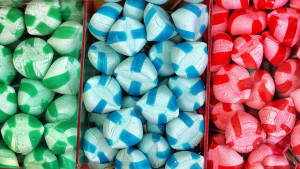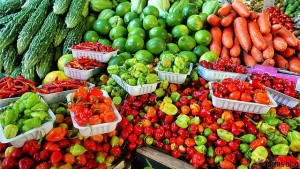Trying to feed our kids healthy foods is a conversation that never seems to end — in my family, with our pediatrician, with our friends. I have found myself having many, many conversations through the years about ensuring my kids are eating the right amount, the right kinds of foods, and a sufficient mix of foods. At the same time, the public conversation about health, fitness, and nutrition is here to stay, giving families countless resources for raising healthy kids.
While I try to strike a balance for my kids between allowing indulgences at special events like birthday parties and regular days where we avoid unhealthy treats, I have an increasing awareness of the prevalence of artificial ingredients in many foods I previously thought of as healthy. So this begs the question: Are artificial ingredients “unhealthy?” What are they, and should I be concerned?
 When I was pregnant, I was hyper aware of what I was eating, in hopes of giving my growing babies the best start possible, and that continued as I nursed my kids and began to cook their meals. Now I strive constantly to give my kids healthy and fresh, unprocessed foods, but I certainly rely on many processed foods, such as bread, cereal, crackers, and many dairy products to form meals and snacks each day. Throughout this journey, I’ve learned to pay attention to the presence of artificial ingredients in the foods my family eats.
When I was pregnant, I was hyper aware of what I was eating, in hopes of giving my growing babies the best start possible, and that continued as I nursed my kids and began to cook their meals. Now I strive constantly to give my kids healthy and fresh, unprocessed foods, but I certainly rely on many processed foods, such as bread, cereal, crackers, and many dairy products to form meals and snacks each day. Throughout this journey, I’ve learned to pay attention to the presence of artificial ingredients in the foods my family eats.Artificial colors and flavors have profound impacts on health and wellness. Derived from petroleum and other chemicals, these ingredients are largely banned outside the US but widely used here in all kinds of foods, especially those marketed toward kids, such as candies, drinks, and other processed foods. There are some obvious culprits — think soda and candy — but I have learned that many healthy-seeming foods contain artificial colors, flavors, and preservatives that are anything but food.
While anyone can probably guess that the lurid red of candy, the neon orange of certain crunchy cheese snacks, and the green in gelatin comes from chemicals, artificial ingredients lurk in even innocuous-seeming foods like yogurt, cereal bars, and even fresh oranges. Here are some ways to keep these ingredients out of your diet:
- Make it yourself! While you may have a few bottles of food coloring rolling around in the depths of the cupboard for dyeing eggs or frosting, it’s likely that most of the ingredients you regularly use for making homemade meals and treats are innocuous.
- Educate yourself and your family, and read all ingredients. The FDA doesn’t require orange growers to label their fruit as dyed, but most processed foods reveal artificial ingredients right on the package.
- Ask your pediatrician about chemical sensitivity to these foods, which has been linked to a range of behavioral and other health issues in kids.
- Buy organic! Any product sold in the US labeled as organic cannot contain any artificial ingredients.
- Shop smart. Most grocery stores now have entire sections dedicated to natural and organic foods. Whole Foods Market has a policy banning all artificial ingredients from anything sold at their stores.
 As we approach summer and the season of cookouts, warm weather treats, and especially vacations, our routines change and our eating does too. Eat well, and stay healthy!
As we approach summer and the season of cookouts, warm weather treats, and especially vacations, our routines change and our eating does too. Eat well, and stay healthy!











